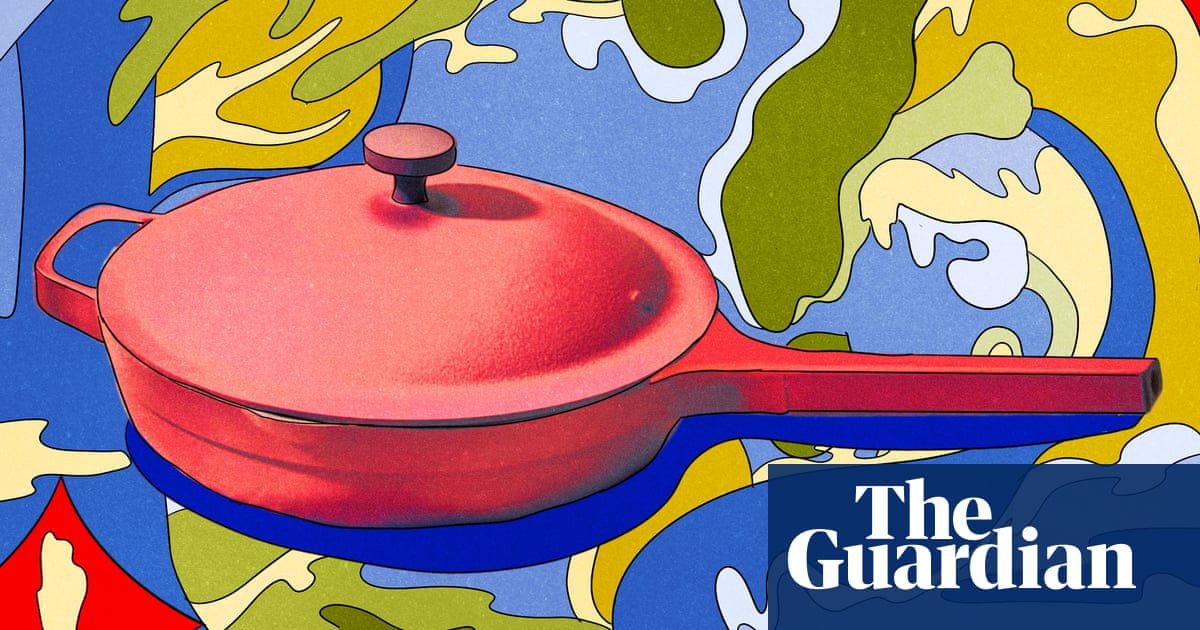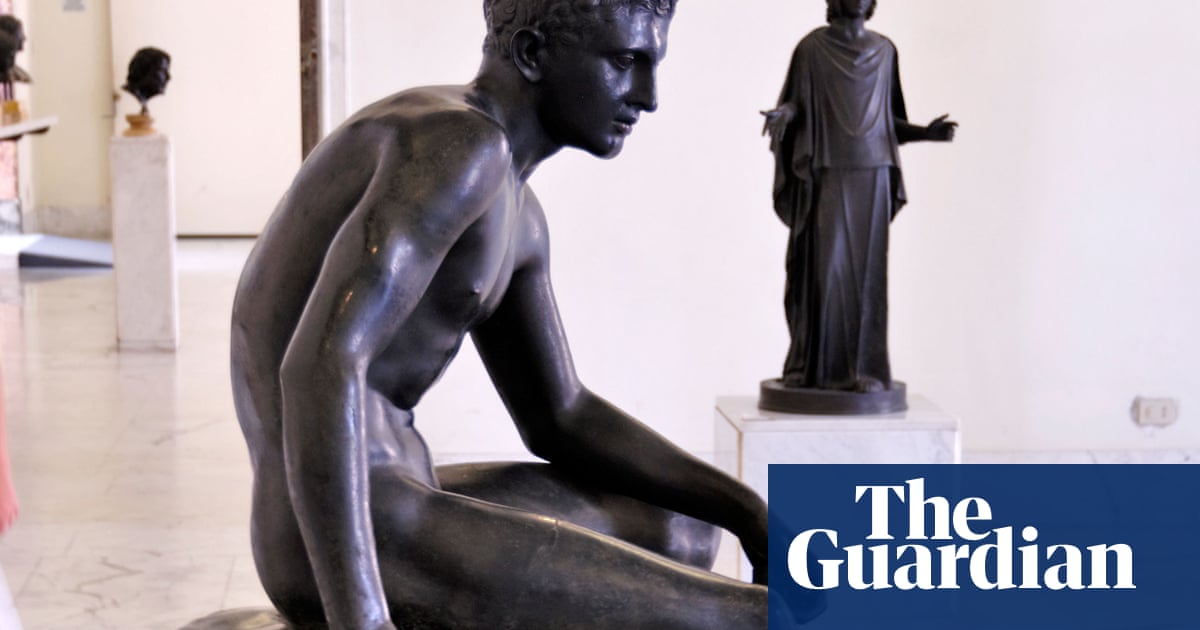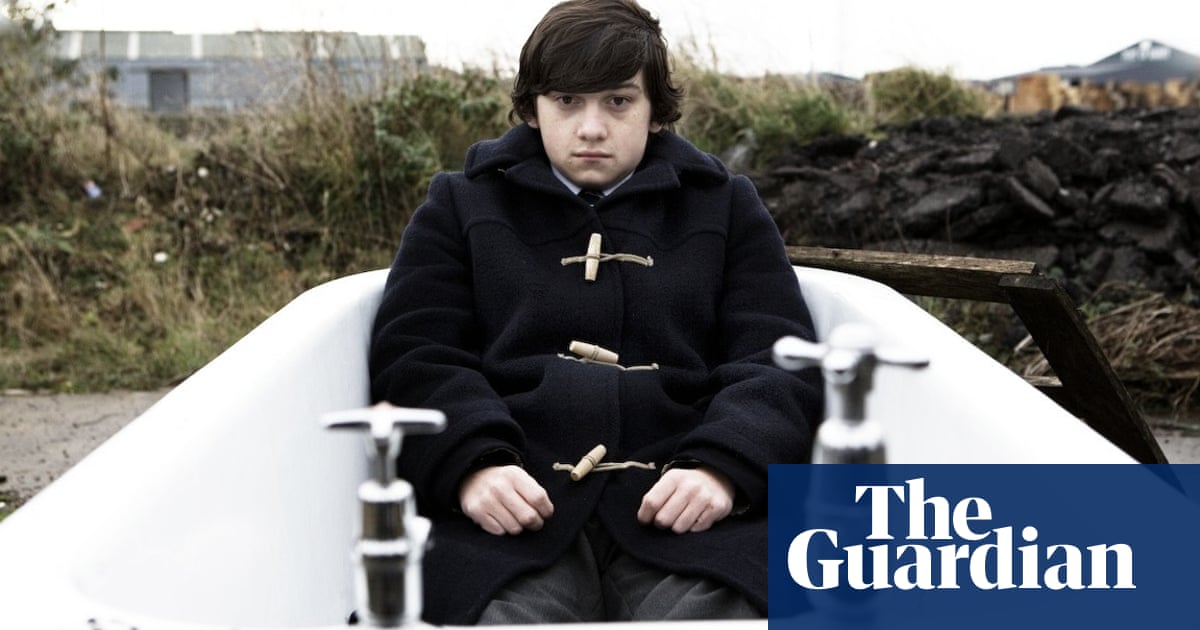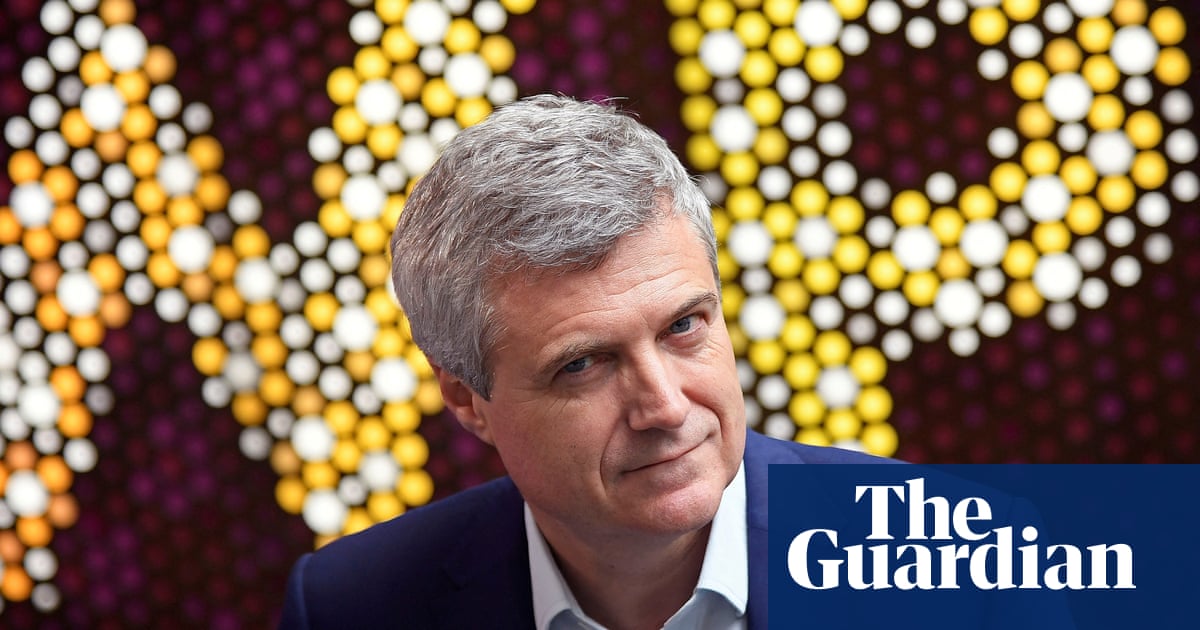‘Leigh would have been livid that it wasn’t a painting of him that broke the record,” says Sue Tilley with a laugh. She’s talking about the £17.2m paid by Roman Abramovich in 2008 for a Lucian Freud nude of her, called Benefits Supervisor Sleeping. It was then the highest price ever paid for work by a living artist and Tilley thinks Leigh Bowery, the fashion icon and performance artist, would have found a way to claim the credit. After all, it was Bowery, her great friend, who got her the modelling job.
Tilley is now repaying the debt by telling the Australian’s story in a new edition of her book Leigh Bowery: The Life and Times of an Icon, featuring never-before-seen photos and an extra chapter on his legacy. You can’t really understand Bowery – his looks, his performances, his club Taboo, his band Minty – without thinking about Freud. The artist’s naked paintings of Bowery and Tilley are today’s equivalents of the great nudes of the western artistic canon. When he painted these two larger than life people in the 1990s, Freud had finally found subjects who could unlock his full and thrilling mastery of the human form, its flesh and its spirit. Yet, says Tilley, Bowery was not so much muse as collaborator, guiding the older man into preserving him and his friends on canvas.

“Leigh liked to sort people’s lives out,” she recalls. “He didn’t like me working in the jobcentre and thought it would be nice for me to do something different. He knew he had to put the idea into Lucian’s head so he’d think it was his own idea. I was invited to lunch where I had to be inspected. Leigh told me what to wear and I completely ignored him as usual! So we had lunch at the River Cafe. It was very nice. Then the next thing I knew I was off being painted. Leigh came round to my house the day before to make me practise taking my clothes off.”
Bowery, who is about to be celebrated in a major exhibition at London’s Tate Modern, was born in Sunshine, Melbourne, in 1961 to religious parents who were in the Salvation Army. “He did say to me once, ‘I’m glad I was brought up properly. At least I know the difference between right and wrong. And then when I do wrong, it’s even more amazing!’”

He wasn’t an outrageous rebel, though, or at least not at home. When he said he wanted to go to Britain, his parents said he had to save up. On arriving in London, he instantly got himself a job, but it was not exactly a great fit: “He worked in Burger King. But then they offered to promote him to manager, so he said, ‘I’ve got to go, I can’t be the manager.’”
From then on, Bowery lived as he wanted, surviving on “bits and bobs”, gradually turning himself into a spectacular work of art. Tilley, who worked in a 00000centre by day and went clubbing by night, met him in the early 1980s. “It was at Cha Chas, which was around the back of Heaven. He wasn’t like Leigh Bowery then. He was just on the scene, going out, getting drunk. Mixed gay clubs – there were loads.”

It was then, Tilley remembers, that club style went wild: “People just started dressing freakier and freakier. It was an effort to find the freakiest outfit, really. People couldn’t afford to buy designer things. Every now and then, you could save up and buy something from Vivienne Westwood, but otherwise you just sort of made them yourself.”
No one dressed freakier than Bowery. He was 6ft 1in, says Tilley, and well-fleshed. But it was his personality that was colossal: “I think there was so much going on inside him that it made him bigger than he was. There was just so much for him to say and think about. He’d always been interested in learning things since he was very young – and getting his ideas out there.”
Bowery began to develop his singular style, making himself into a comical giant or giantess. He wore very high heels and padded skirts that gave him an enormous rear, sewing or painting patterns of dots or tiger stripes not just on his dresses or body stockings but all over his face, initially as makeup, then on head-enfolding masks he called “fabric faces”.
By the late 1980s, he was a cult figure on the London fashion scene, making a surprisingly nervous 1988 appearance on the BBC’s The Clothes Show. But there was a problem with making it as a designer: “He didn’t like making clothes for other people, really.” He claimed to be horrified by the idea of walking into Sainsbury’s and seeing other shoppers dressed like him. One exception was Tilley: he always made her dresses. “You couldn’t buy large clothes back then so he used to make them for me. They all had names. ‘What have you got for me today?’ ‘Oh, it’s Clementine,’ he’d say or, ‘This one’s Princess Margaret.’”

A fashion career wasn’t for him. Instead, Bowery started getting recognition in what was then a tinier London subculture: the art world. Bowery became a performance artist, appearing in the window of the Anthony d’Offay Gallery for a week, contemplating his own image in a mirror, running through a series of costumes. Tilley is still awed by the memory of his most infamous performance, which involved a much slighter performer called Nicola Bateman.
“He came onstage looking enormous,” she says. “He had this big sort of velvety dress on, trying to be a bit like Divine, shoes not that high-heeled. He’s singing and dancing, then he suddenly lies back on the floor, opens his legs, and there’s a gusset with Velcro and it opens – and Nicola comes out like he was giving birth to her. This whole time he’s been holding her strapped to his body and she was all covered in blood and greasepaint and muck. He’s got vegetable soup in his mouth, so when she comes out – you know how a mother bird feeds her baby out of her mouth? He fed her like that. How he could have done it is beyond my comprehension.”
You can see this for yourself in a YouTube clip of Bowery at Wigstock, the New York drag festival, belting out a toneless version of All You Need Is Love before falling to the stage to “give birth” to Bateman who then sits there motionless, naked, covered in blood, as he cavorts. If only more performance art was as funny and shocking as this.
Accounts differ about which performance was witnessed by Freud, who was also represented by the D’Offay Gallery. Whichever it was, he was fascinated and wanted to paint Bowery. It was a departure for an artist whose previous subjects included wealthy art patrons and his own family. It instantly became something more than a portrait sitting. “Lucian thought Leigh would want to be painted with one of his outfits on,” says Tilley. “So I think he was thrilled when Leigh turned up and just stripped naked.”

I remember seeing Freud’s first paintings of Bowery at the Whitechapel Gallery in 1993. One was dominated by a rippling, tumultuous fleshy back, soft, saggy yet strong, as Bowery sits on a low velvety stool with his huge shaved head turned away. In another canvas, his keen eyes catch yours in a raw, provocative stare as he lies with one leg up displaying his penis.
A few months later, I saw Bowery perform with Minty at a club called Fantasy Ashtray. There wasn’t even a stage and they were barely a band: just a thrashing amplified chaos over which he screamed. Now that he’s being officially recognised as a legend, I suppose this is like having seen the Sex Pistols at the 100 Club. But to be honest, I was more awed by the painting of him naked and actually found it hard to reconcile the two. Who was the real Bowery: fabric-faced icon or vulnerable nude? “Of everything,” says Tilley, “he preferred being naked. He was very happy to show off his body.”
It’s not hard to see the irony: a performer known for his wild all-covering costumes gave Freud his naked truth. Maybe it was about self-acceptance. “He was constantly thinking he was fat,” says Tilley. “He liked food too much, a bit like me.” But there was another reason to get himself on canvas for the ages. Bowery had been HIV positive since the late 1980s and these were to be the closing years of his life.
“You know the painting where he’s standing on that box?” says Tilley. “He was incredibly ill at the time. The meningitis was kicking in. I’m so lazy I had to lie down in all my pictures. Not for anyone would I be forcing myself to stand up and be uncomfortable.”
The painting is Leigh Under the Skylight, the most heroically posed of all Freud’s Bowery paintings. Seen from below, he appears colossal, posing on top of a box so his head is just under the dirty grey studio skylight. It courts comparison with Michelangelo’s David and, given Bowery’s horizontal as well as vertical mass, the ancient Roman statue called the Farnese Hercules. But even as his shoulders are lit by the skylight, Bowery’s face is shadowed, broken up. You can’t help wondering: is he in great pain holding this pose, as Tilley suggests, or angry at his illness?

There is one thing we can be sure of: this endurance test is not being coldly forced on him by Freud, who died in 2011 aged 88. It comes out of a friendly, even loving collaboration. “They worshipped each other and they both helped each other in so many ways,” says Tilley. “Leigh loved his intelligence and Lucian loved Leigh’s bravery. And because Leigh was so big, he had to go big in his paintings, change his brushstrokes, everything. They got on like a house on fire. They loved each other.”
Bowery even told Tilley there was physical intimacy. “He used to say, ‘I gave Lucian a blowjob last night.’ I’d say, ‘Oh did you?’ It was just lies, lies he used to tell.”
As the critic Kenneth Clark once observed, all great nudes have an erotic charge. Freud’s certainly pass that test – yet they also have a warmth and enthusiasm, an amazed relish that’s fiercely loving.

Bowery seems to have played up to the traditional role of the model as street rogue. “Freud did pay us something,” says Tilley. “But Leigh got ‘paid’ more because he used to steal it. Lucian had pound coins all over the shop and he’d go to the bank and take out £500 in £50 notes or something. They were just in a drawer and Leigh knew where they were. He would just help himself. I’d go, ‘You shouldn’t do that.’ And he’d say, ‘Oh no, he wants me to have it. He’s too embarrassed to give it, so he lets me know where it is. He knows I’ll take it.’”
Out of this relationship, something larger began to take shape: a group of paintings that tell the story of a particular little creative world, as Bowery introduced Freud to his friends and they became fixtures of his studio. “So between the paintings,” says Tilley, “there are interwoven stories. The ones of Nicola, Leigh and me. Then there are other friends that have sat for him. Everyone in these pictures knows each other in some bizarre way. He even painted my brother’s girlfriend.”

At the centre of the stories towered Bowery, at once cajoling and manipulating Freud, letting that painter’s eye for truth depict the tragedy of his worsening illness, even when Freud wasn’t told everything. Tilley cites the painting Girl Sitting in Attic Doorway, which portrays Nicola perched naked in an alcove high on a studio wall, her face full of sorrow. Even though Bowery was “gay and that was that”, he surprised everyone, including Tilley, by marrying Bateman in 1994. Friends were given different reasons: that it was art, or even a tax dodge. But Bowery told Tilley when he was in hospital that he was scared Bateman would leave him for another man.
There was no need to worry: “She loved him. She’d do anything for him. When Girl Sitting in Attic Doorway was painted, she knew Leigh was ill in the hospital and she was crying. Lucian didn’t know Leigh was that ill at the time, because we had to lie to him. The lies and the hoo-hah that went on! I love that picture.” I do too. Although Bowery had ensured Freud only partly knew about his life, you can’t miss the grief it contains.
Freud seemed almost to intuit their marriage, given one work in which he painted them lying side by side, her pale, small body dwarfed by his brownish bulk. Freud called it And the Bridegroom. “Leigh’s thumb is pressing his thigh and you can see the little dimple. It’s so lovely. Freud didn’t know they were married when he called it that.”
It was a pose and a performance given in the face of death. Increasingly ill as he sat for Freud, Bowery died on 31 December 1994. Bowery wanted Freud to immortalise him in paint – but now, ironically, it’s his fashion looks and performances, seemingly so ephemeral at the time, that are the stuff of legend. Maybe Freud needs Bowery for immortality rather than the other way round. Perhaps they need each other.
Tilley returns to the question of who the real Bowery was, the nude or the flamboyantly disguised performer. “Both,” she says at length, “because you can be more than one person.”

 3 months ago
98
3 months ago
98

















































